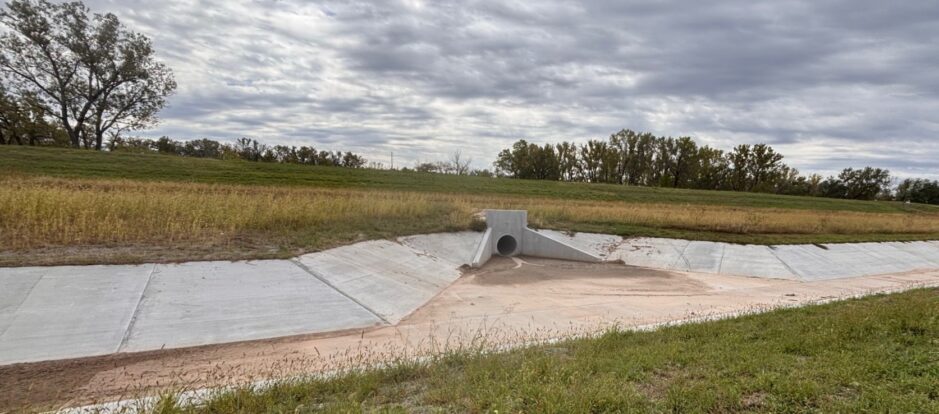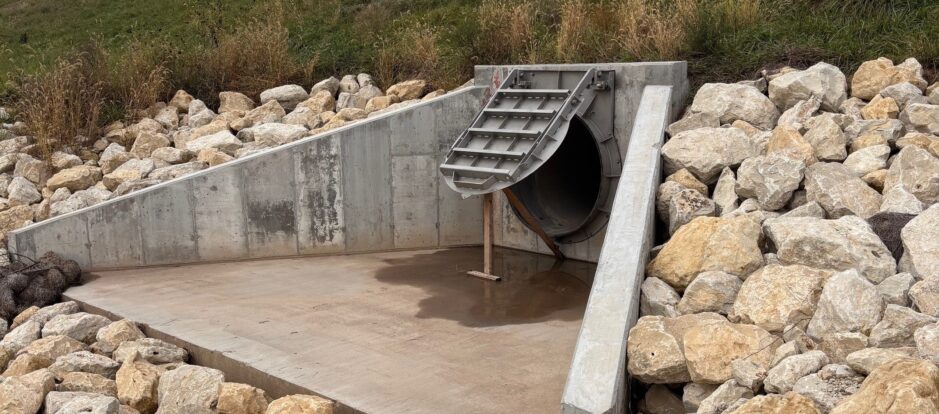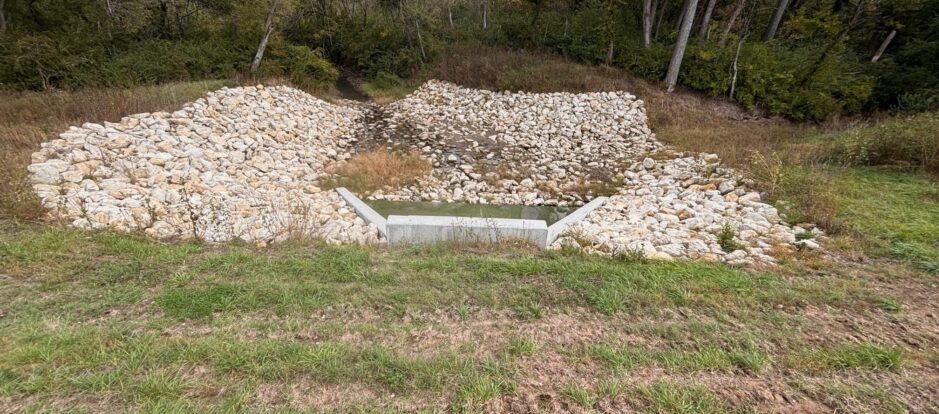Camp Funston Storm Sewer Design
The Fort Riley Directorate of Public Works (DPW) wanted to provide an efficient drainage system for Camp Funston. DPW worked with the United States Army Corps of Engineers (USACE) and Affinis to design a solution that drains the very flat grades and improves undersized pipes to meet the current 10-year design standard. Improvements will reduce work for operations and make maintenance activities less frequent.
Before beginning design work at Camp Funston, we conducted a preliminary study. The plan was to perform an initial evaluation of the system and identify potential challenges. Our team used a van mounted LiDAR unit for the bulk of the area within the right-of-way. Those efforts were supplemented with an additional topographic survey that included the stormwater and sanitary sewer systems. In this phase, we also took some geotechnical borings.
Based on our findings, USACE decided to split the project into two packages. The first would cover the eastern two-thirds of Camp Funston. The second would include the western third. We began design on the second package first, because it tied into an ongoing railhead improvements project. As these systems work together, designing them in tandem was efficient and helped mitigate any potential conflicts.
Upon completing the analysis, we proceeded with putting the plans together after we could see the modeled system would function and fit in the ground. The prepared drawings include ditch systems, culverts, and enclosed storm sewers. To meet USACE’s goals, the team upsized the pipes and culverts, lowered the ditches, added and upsized RCB’s, and changed some of the grading. We also developed a design analysis report, project specifications, and worked with a consultant to create a cost estimate.
A primary driver for the design of package one was a single undersized outlet through an existing Kansas River levee. The final design includes the addition of three regional detention ponds, upsizing the existing outlet, and adding two additional large levee outlets.
Other design challenges included the regrading of roadside ditches to allow the removal of guardrail, extremely flat ditches, and a new parking lot adjacent to an existing building. In total, the Camp Funston improvement project was phased into two packages, 19 volumes, and a construction timeline likely spanning a decade.
Camp Funston DPW is currently constructing the proposed work in a phased approach. Construction is ongoing.


